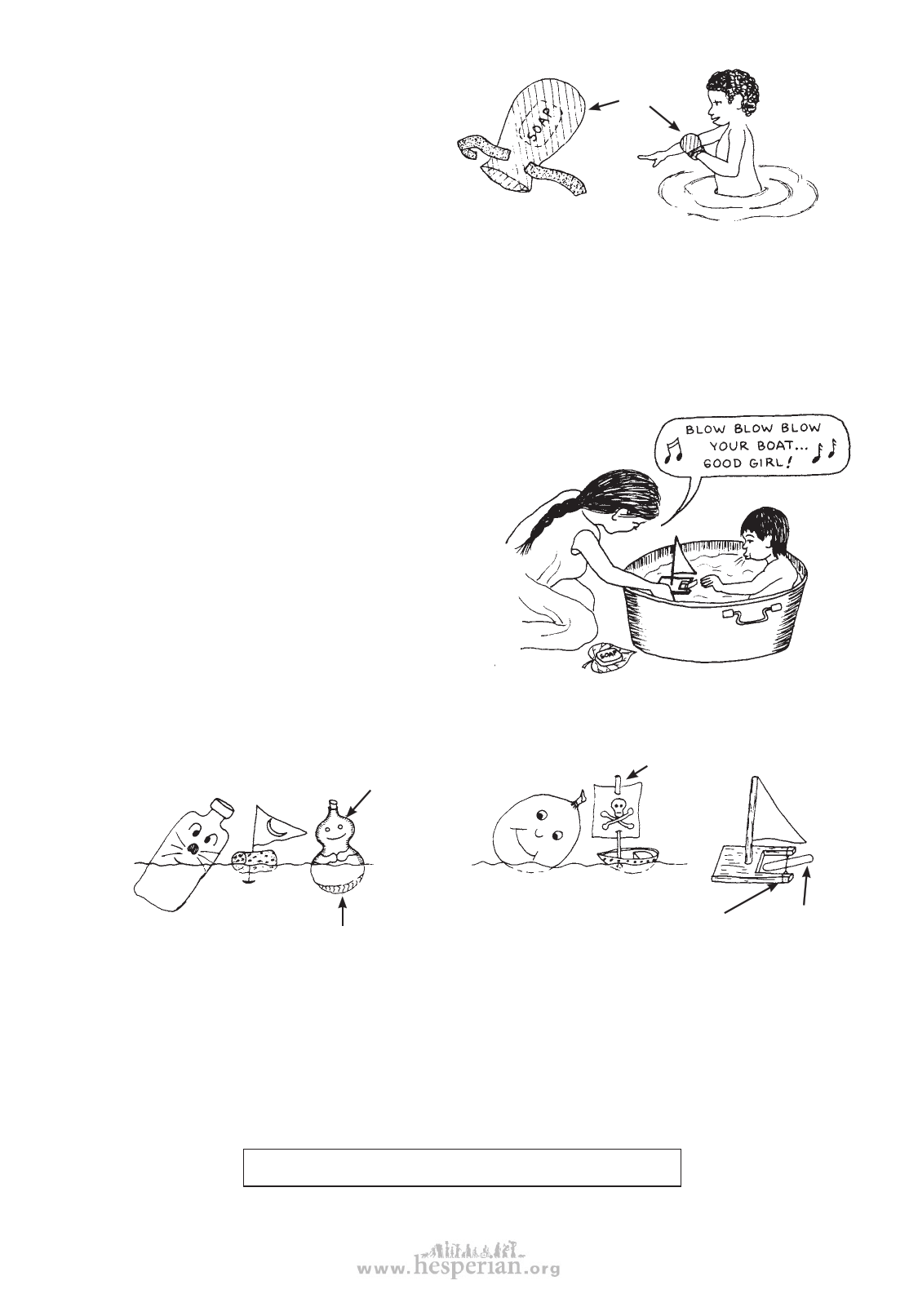
A soap mitt, made of a piece of towel
and a tie string (or Velcro straps), lets
the child who has difficulty grasping
use both the washcloth and soap more
easily.
BATHING 347
soap
mitt
Bath time is a good time to help a child develop many different skills. Encourage
her to handle and play with toys in the water, repeat words, and imitate actions. Let
her feel the difference between a sponge and a cloth, or dry and wet and soapy. To
learn to use both hands together, let her squeeze water out of the sponge.
To help the child learn how to bathe herself, let her first wash her toys and dolls.
Show her how and encourage her to copy you.
For a child who is afraid of the water,
letting her bathe a doll or toy first may calm
her fears.
Toys that float in the water make bathing
more fun. Use corks, bits of wood, or plastic
bottles with lids on them. Making little boats
with sails or ‘paddle wheels’ makes it more
fun and helps the child learn to use her hands
better. The child with weak lips or who drools
can play by blowing the boat across the water.
For the child with limited control or strength, it is often easier to play in the water
with toys that float than it is to play with toys out of the water.
gourd (Pour mud
or plaster in
bottom and let it
dry so that gourd
floats upright.)
pole fastened
with glue or
chewing gum
plastic
bottle
cork mud
(inside)
balloon
nut
shell
rubber
band
paddle made
from tongue
depressor or
piece of bark
Drying the child can also become a game that aids development. Rub the child,
sometimes gently and sometimes briskly, with a rough cloth or towel. Name the
different parts of her body as you rub them. Remember, as you bathe and dry the
child, talk about each thing you do—or sing a song about it! Move the towel with
the music, and encourage the child to move with you. Use your imagination to make
it more fun and to help her learn.
Use bath time as an opportunity for learning and play.
disabled village children